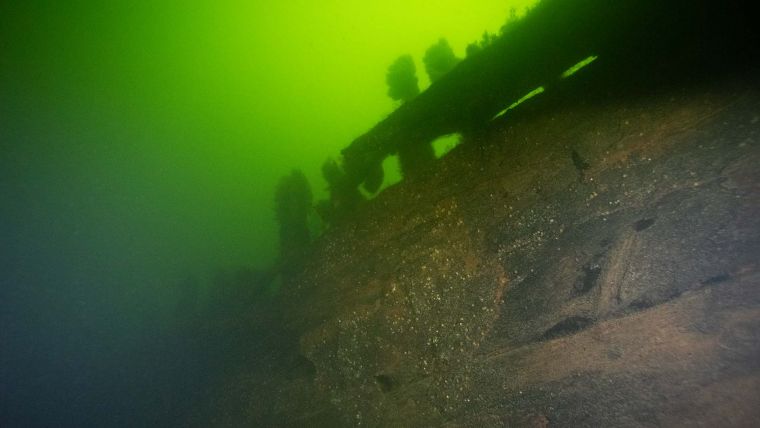Two Well-preserved 17th-century Warships Found Off the Swedish Coast
Video Included
Two large warships from the 17th century have been found by divers outside Vaxholm, an island near Stockholm, Sweden. Archaeologist divers from the new museum Vrak – Museum of Wrecks are hoping to have found the Vasa’s sister ships. Maritime archaeologists at the new museum that is part of Sweden’s National Maritime and Transport Museums investigated historical remains in a depression in the sea bottom, outside of Vaxholm.
The discovery was astonishing, according to the museum: the maritime archaeologists first discovered a shipwreck as big as the Vasa ship. It was a 17th-century warship that was most likely purpose-sunk to make it harder for intruders to take the sea route to Stockholm. The stern is broken, but the bow is better preserved and sticks up roughly 5 metres from the bottom of the sea. The measurements taken and the design details recorded both tally well with the Vasa’s.
“It was like swimming around the Vasa ship,” says maritime archaeologist Jim Hansson enthusiastically. The next day, the team found another shipwreck – probably larger than the first – in the lengthened section of the first wreck they had found.
The maritime archaeologists hope they may have discovered the Vasa’s sister ship, the Apple, one of several large warships that, according to historical sources, were sunk outside Vaxholm during the second half of the 17th century. The Crown and the Sceptre, two ships built in a series together with the Vasa during King Gustav Adolf’s equipping of the Swedish naval fleet, are likely to be among them.
During the dives, the archaeologists took several samples of the wood in the wrecks. These samples will now be analysed in order to date and hopefully identify the wrecks. “The detective work has only just begun,” Hansson says. The dives were carried out by the National Maritime and Transport Museums in cooperation with the Swedish Navy.
About Vrak - Museum of Wrecks
Vrak – Museum of Wrecks is a museum that aims to spread knowledge about the maritime heritage of the Baltic Sea. With the help of digital technology, the museum will bring the stories to the surface while allowing the wrecks to remain at the bottom where they are best preserved.
The museum opened in 2021 on the island of Djurgården in Stockholm. The new maritime archaeology museum brings together the knowledge and collections from the Maritime Museum, the Vasa Museum, the Naval Museum and other sources. The museum is part of the National Maritime and Transport Museums.
The museum’s maritime archaeologists are already doing dives, research projects, archival studies and networking around the Baltic Sea. This work is bringing in a steady stream of knowledge and environmental observations that can be shared at the museum.
About the warships
King Gustav II Adolf equipped his naval fleet during the 17th century. He was a proponent of large, mighty ships with plenty of artillery. The large ships that were completed after the Vasa (1628) on Skeppsholmen (now Blasieholmen) included the Apple (launched in 1629), the Crown (1632) and the Sceptre (1634).
The Apple took part in the invasion of Germany in 1630 but appears to have been used sporadically thereafter. It was most likely a problematic ship and was sunk in a strait near Vaxholm in 1659. The Crown engaged in battle at Kolberger Heide in 1644 and Öresund in 1658. The Sceptre became the best sailing ship of the big ships, and was used in the Kolberger Heide battle in 1644. Both ships were probably sunk in a strait near Vaxholm in the 1670s.
(Photo: Starboard side wreck. Credits: Jim Hansson, SMTM)














